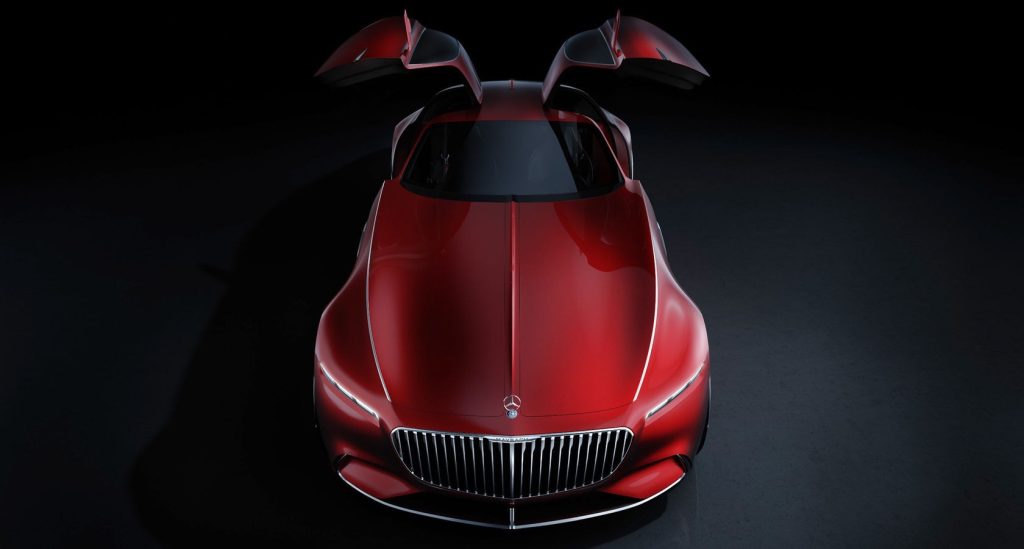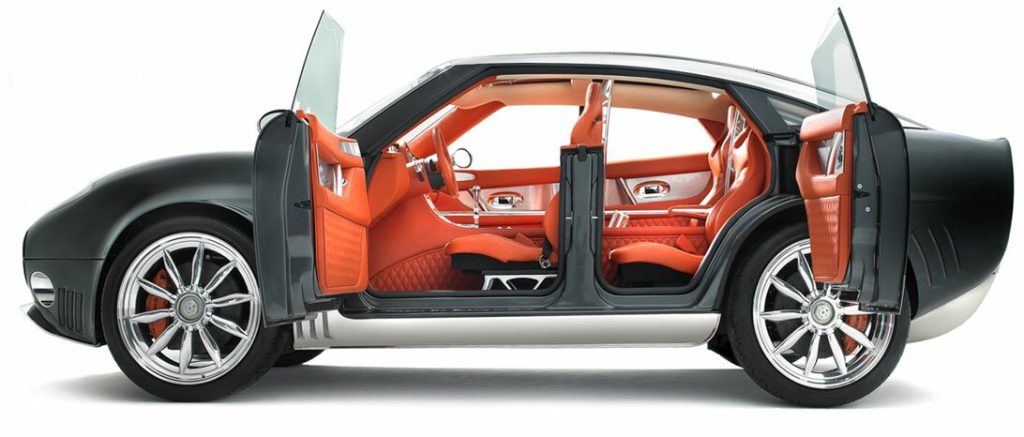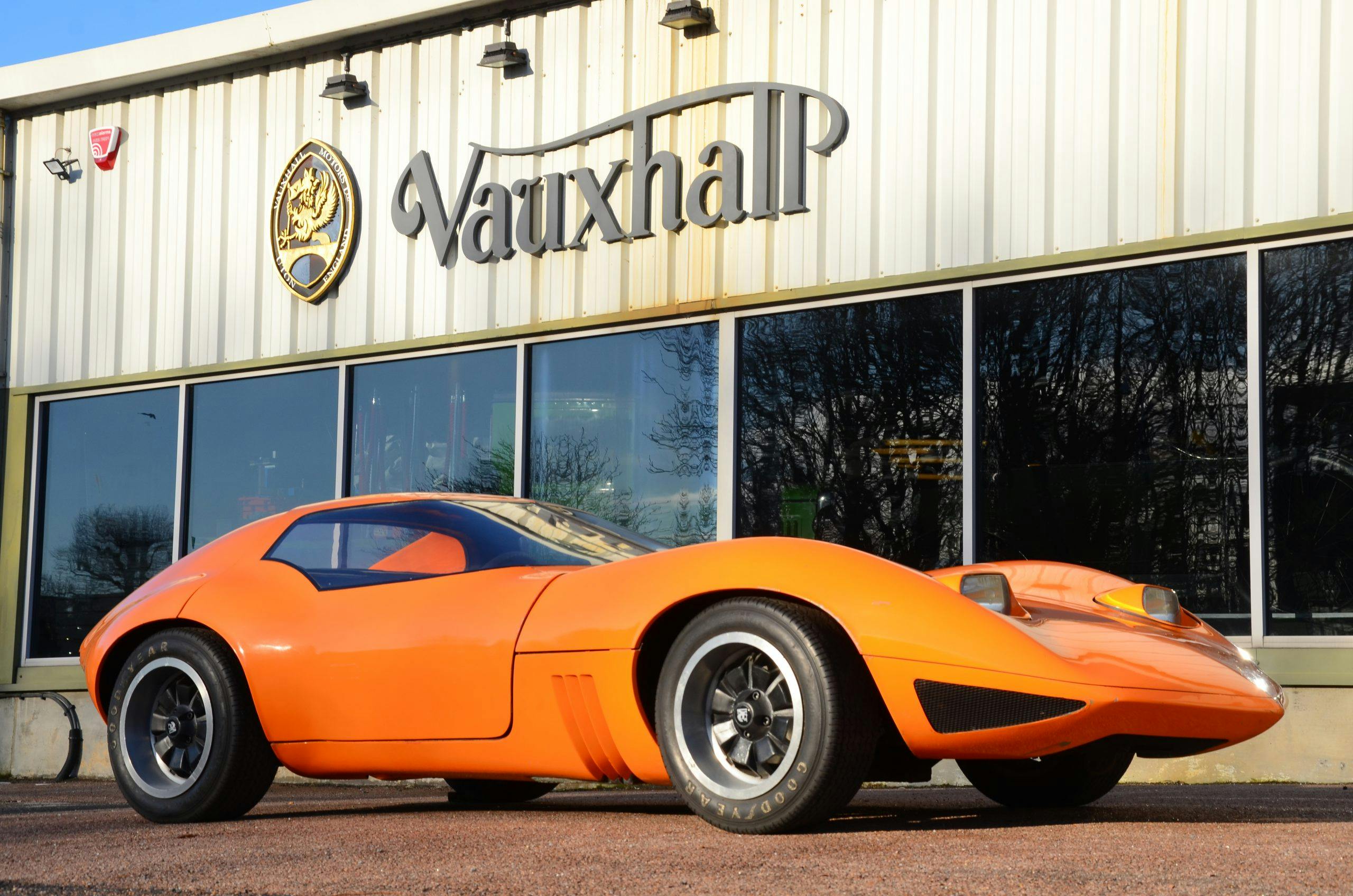The dust has just about settled on the Jaguar Type 00 – the brand’s preview of an all-new luxury model due in 2026, which will shake up Jaguar more than any car it has launched in decades.
The Type 00 and its associated marketing whizz-bangery have generated a mixture of confusion, excitement, and anger, but for Jaguar the fact people are talking about the brand again will be the main takeaway. For us, the car is more important, and we won’t get to see that for another year or two. But if it does make it to the road in some form or another, it will have gotten a step further than most luxury concepts.

The Type 00 is far from the only bold vision of automotive opulence we’ve seen over the last three decades or so – in fact, they’re something of a recurring theme with their long bonnets, dramatic styling, and outlandish interiors. So joining the Jaguar, we’ve selected nine other concepts that redefined high-class travel – some of which got closer to production than others.
Jaguar Type 00

The vehicle that inspired this collection is also the newest, and pushes the limits of the luxury car art (and, some might say, taste) with the best of them. Your author is no designer (for a take from someone who is, try Matteo Licata’s excellent piece here) but it shouldn’t be too controversial to proclaim the Type 00’s profile its strongest angle, avoiding any view of the brutalist front or rear but accentuating the car’s length and any resemblance, however slim, to the E-Type.



For all the furore though, the concept does send a clear message: Jaguar wants to move up in the world. The last XJ was a rather lovely thing to behold, from some angles at least, and had a fabulous cabin, but the 00’s use of materials like bronze and stone, and the absolute minimalism of its details, suggest something altogether more boutique. Love or loathe it, it’s one of the most notable statements in the luxury car space in years.
Bertone B99

If the Type 00 is absolutely modern, the B99 is a vision of a Jaguar saloon with more of a nod to tradition. In some ways it’s a little too modest to appear on this list – at 4.5 metres long, it’s shorter than an X-Type – but it’s a sign of how different a direction Jaguar might have gone following its 2011 reveal at the Geneva motor show.


Although Jaguar allowed use of its badges on the Bertone concept, and although the vision was well received on its debut, the brand dismissed the B99 almost immediately as a route it wouldn’t take with its future models. It may not have been modern enough for the Jaguar of the time, which was steadily shedding its retro reputation, but you have to wonder whether it might have distinguished itself more in the market than the cars that followed.
Bugatti Galibier

In some ways it’s remarkable that since Bugatti’s revival with the Veyron in 2005, the Volkswagen Group hasn’t tried to spin it into a luxury brand behemoth headed by enormous SUVs and imposing grand tourers. In that respect, the bloodline from Veryon to Chiron to Tourbillon has been quite pure – but it’s a shame the 16C Galibier of 2009 never joined that small stable.
Named for its 8-litre twin-supercharged WR16-cylinder engine, and the Col du Galibier pass in France, the Galibier was an imposing four-door fastback saloon, not dissimilar from some angles to the original Porsche Panamera, with styling cues that referenced both the Veyron and vintage models like the Type 57SC Atlantic – most notably with a two-piece opening bonnet like those grand tourers of the 1930s, and a central spine running the car’s length. The Galibier is surely an idea due for revival using the Tourbillon’s new V16 . . .
Cadillac Sixteen

The Galibier isn’t the only car here with a 1930s-style two-piece opening bonnet, nor a 16-cylinder engine. Unveiled in 2003, a design team led by Wayne Cherry (who greenlit some of GM’s most striking shapes in the early 2000s) penned an enormous near-5.7-metre-long saloon designed to hark back to Cadillac’s 1930s glory days – a time when it could genuinely lay claim to creating some of the world’s best cars.


Inside, leather seats paired with silk carpets, a walnut dash and door panels, and a Bulgari clock. Essentially, it was every bit as grand a statement for Cadillac in 2003, whose key luxury models were the front-wheel-drive de Ville and the Escalade SUV, as the Type 00 is for Jaguar in 2024. While the Sixteen never made production, Cadillac has at least taken another step toward ultra-luxury with the all-electric Celestiq.
Chrysler Phaeton

It’s no surprise that so many cars here seem to hark back to the immediate pre- and postwar decades for inspiration, because some of the world’s most imposing and opulent luxury models were produced during this time. The Chrysler Phaeton shown in 1997 was another with an eye on the ’30s and ’40s, an enormous (5.5 metres long) four-door folding hardtop, with a dividing partition between the front and rear seats – a nod to the “dual cowl” open-topped models of the 1920s.
Styling was the work of Tom Gale, who also had a hand in the Plymouth Prowler and, perhaps even more notably, the Lamborghini Diablo. Chrysler didn’t go halves on the engine either, not quite matching the 16-cylinder cars elsewhere on this page, but still packing a 5.4-litre V12. Those of a certain age may best recognise the Phaeton from an unusual place, however: It was a prize car in 1999’s Gran Turismo 2.
Hongqi L-Concept

If you’re not a Chinese government official, then you’re probably unfamiliar with the Hongqi marque, but its cars serve the same purpose for China’s dignitaries and high-fliers as the Toyota Century does in Japan. It has done so since 1958, too, and the brand has occasionally referenced these early cars in the styling of its newer models.
The L-Concept is one of the latest and appeared at the Shanghai Auto Show in 2021. It points, in theory, to a full production model – something no other model on this page has achieved – but for the time being remains a concept. The exterior is striking, with lights like spider webs and an imposing chrome grille, but the three-seat cabin (one of the rears fully reclining into the front seat space) with its chandelier, and the absence of a steering wheel, is the real talking point.
Lamborghini Estoque

The Lamborghini Estoque of 2008 is less of a grand luxury limousine than the others here, but it did illustrate the brand’s ability – prior to the launch of the Urus SUV – to step outside the supercar space now and then. That would be true to the company’s roots, too, given the Miura was something of an aberration among the likes of the 350GT, Espada, and Islero; luxurious grand tourers were the company’s early bread-and-butter.


The Estoque, had it made production, would have packed the brand’s 5.2-litre V10 up front and sent power to all four wheels. The styling still seems contemporary – it’d fit right in alongside the Temerario, Revuelto, and Urus – and the current SUV shows that a luxurious (if idiosyncratic) driving environment isn’t beyond the company, so the concept’s cabin would surely tick the right boxes for owners.
Maybach Vision 6

Alongside the Type 00, the Vision Mercedes-Maybach 6 (to give it its full title) has probably the boldest proportions of any car here. Maybach doesn’t shy away from over-the-top forms and features (remember the Exelero?) and in its 5.7-metre length, Mercedes design boss Gorden Wagener has made full use of the space available to perch a low cabin behind a staggeringly long bonnet.


It’s fully electric, pointing to the way the Daimler brands are moving, and access to the stunning cabin is via a pair of gullwing doors (in the coupe version), a nod to elsewhere in the group’s history. Interior details are a cross between 1920s Mercedes grandeur, 1950s rocket-era styling, and 1960s luxury speed boats. It also happens to be the third car here with a two-part opening bonnet
Rolls-Royce 103EX

Considering they were once such a significant part of an automobile’s styling, few companies in recent memory have ventured to replicate the idea of separate front wings. In production models they’re the preserve of new cars that strongly echo older ones, like the Caterham Seven and the Morgan Super Three. It’s an idea, however, that Rolls-Royce brought back in spectacular fashion with the Vision Next 100, or 103EX, in 2016.


Get past marketing speak about “grand sanctuaries” and a digital assistant called “Voice of Eleanor” and you have the company’s vision of the future of luxury transportation, from a lounge-like interior for two (with no steering wheel, being fully autonomous), to slide-out luggage areas located behind those prominent front wings. Today’s Spectre isn’t quite as dramatic, but it is surely the first true step toward the Rolls of the future laid out by the 103EX.
Spyker D8/D12 Peking-to-Paris

We’ve kept away from SUV-style form factors here given the Type 00 has deliberately taken a more traditional shape, but of the many luxury SUV concepts we’ve seen in recent decades, the Spyker Peking-to-Paris deserves its spot here more than most. As its appearance suggests, it was less of a concept than most, too, with real production intentions. Originally shown in 2006, however, it was perhaps just a little early to hop onto the luxo-SUV bandwagon.
The two prefixes, D8 and D12, refer to the two different engines Spyker suggested the P-to-P might use – first a Volkswagen Group W12, later a Koenigsegg-sourced V8. Styling meanwhile was closely related to the C8 Laviolette, while clap-hands doors would have been just one of the model’s many styling flourishes. It joins a long list of intriguing ideas from small-volume makers that never quite made it all the way, but with Spyker still around, there’s always time to revisit it in future.









